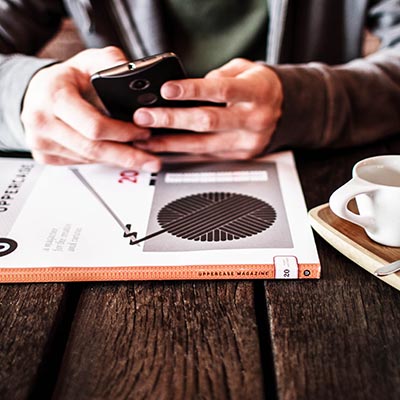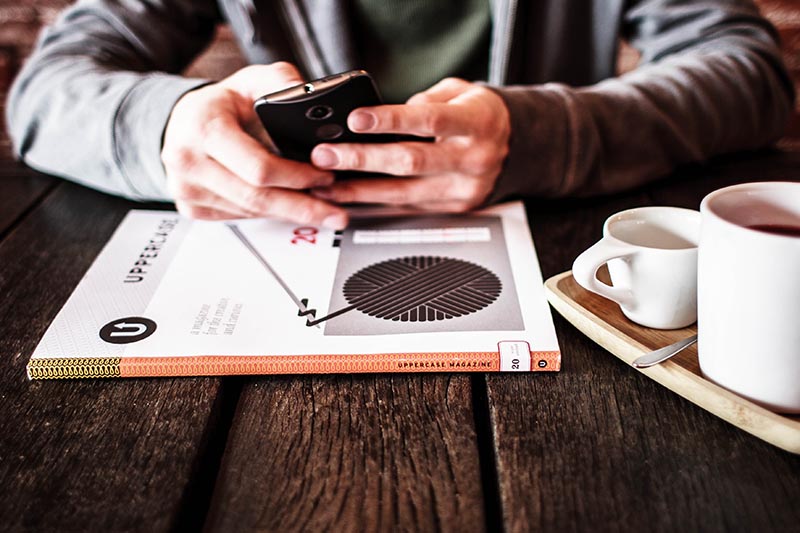Most of us have an emergency first aid kit for minor cuts, scrapes, and burns. Immediate treatment of small injuries can prevent them from getting infected and turning into larger injuries, and maybe even save us a trip to the ER.
Equally as important to have readily is a mental health emergency kit to help us weather the emotional storms of life—break ups, lost jobs, car accidents, and tough news—just to name a few. When these storms hit, it’s easy to feel lost in the chaos, or sink deeply into our dark feelings.
We all have our own mood boosters and coping mechanisms when we need to feel a bit better on a not-so-good day. But what about when our world gets flipped upside down and things get really dark, suddenly and unexpectedly?
We can’t control these emotional storms any more than we can control the actual weather, but we can plan ahead, and as we say in the south, hunker down. This is where your mental health emergency kit comes in handy.
What’s a mental health emergency kit? It contains reliable resources, objects and people that you can turn to during a storm. These are resources that you can turn to at any time (even 2 a.m.!), and are best built in advance, so you’re as prepared as you can be the next time a storm arises.
Here are 4 things I like to recommend everyone store in their mental health emergency kit:
1. Something calming
When these life storms happen, our initial feelings are often ones of overwhelm, anxiety, sadness, or anger. Any one or combination of these feelings can be incredibly intense and cloud our focus, which is why the first emergency kit item I recommend is a technique or tool that can reliably calm you down.
A common physical manifestation of these intense feelings is muscle tension. One of my favorite relaxation techniques to combat muscle tension is progressive muscle relaxation (PMR). This technique is easy in that it can be done anywhere. It takes just a few minutes and it has been proven as one of the most effective relaxation techniques. PMR involves alternating between tensing and relaxing individual muscle groups. This process is repeated gradually throughout the entire body for to achieve complete relaxation.
2. Something cozy
Have you heard of hygge? It’s a Danish concept for being cozy through enjoying the simple things in life. Researchers have shown that embracing coziness can improve happiness. Hygge includes embracing self-care, practicing self-compassion, and creating a cozy environment. This means whatever helps you feel more relaxed and supported.
Include creature comforts in your emergency kit that you can reach for during dark times. This could be cuddling with your pet, pulling on a favorite sweater, or sipping something hot and soothing, like a cup of tea, coffee, or hot chocolate. When it feels like the sky is crumbling, these soothing small pleasures can go a long way to making you feel comforted.
3. Something that’s a good memory
It’s good to remind ourselves that no matter what we’re going through, we’ll have good times again. One of my favorite ways to do that is to include something that sparks a good memory in my emergency kit.
It could be a treasured photo of a happy event like a great vacation or celebration, or a photo of the person you love most in the world. Maybe that’s turning on your all-time favorite song, or a playlist of happy tunes that transports you to a better time. It’s well known that music is therapeutic in that it boosts happiness and reduces anxiety. As a big music aficionado, I’m happy to share my Spotify ‘Mood Boost’ playlist with you!
Whatever you choose, listening or looking at this happy time can remind you that storms are temporary, and you have more light than darkness in your life.
4. Someone you trust
Who is someone you trust and can turn to when you’re in the center of a storm? Keep in mind that storms can hit at any time, so this person should be someone you feel comfortable texting or calling even if it’s the middle of the night. Perhaps it’s the therapist you’ve been working with, your mom or dad, your significant other, or a close friend.
Define who this person is now, so you know who you’ll turn to when you’re going through an emergency. When you do give them a call, do your best to not deluge them with information the second they pick up. Explain what has happened as evenly as you’re able to, then give them a chance to react and provide the reassurance, guidance, and love you know they will—that’s why you’ve included them in your emergency kit.
Other considerations
Finally, if you are prescribed psychotropics, please make sure to include your medication(s) in your kit. Be sure to always keep up with your refills, take as prescribed and keep your doctor’s phone number stored in your contacts.
If you have ever experienced suicidal thoughts, I also urge you to keep the National Suicide Prevention Lifeline number in your kit. The lifeline is free to use and provides 24/7 confidential support: National Suicide Prevention Lifeline: 1-800-273-8255
Remember this
Life happens, so it’s a matter of ‘when’ a storm will hit, rather than ‘if.’. Build your emergency kit now, so you have somewhere comfortable to go the minute you realize you have a storm to contend with. Your job in these moments is to ride it out, reach for your emergency kit, and know the storm will ultimately pass—it always does.

By Rosimar Suddeth, LCSW-S
Sanvello Teletherapist
I’ve been a social worker for fifteen years and a licensed clinical therapist for eleven. Like you, I am a card-carrying human and have experienced the joyous ups and painful downs of life. I have learned that we are resilient and so much stronger than we often realize. As a Sanvello teletherapist, my goal is to help others tap into their inner strength and develop treatment goals tailored to their specific needs. Originally from South America, I’ve lived most of my life in the great state of Texas and enjoy spending time with my husband of 11 years and beautiful twin daughters.

